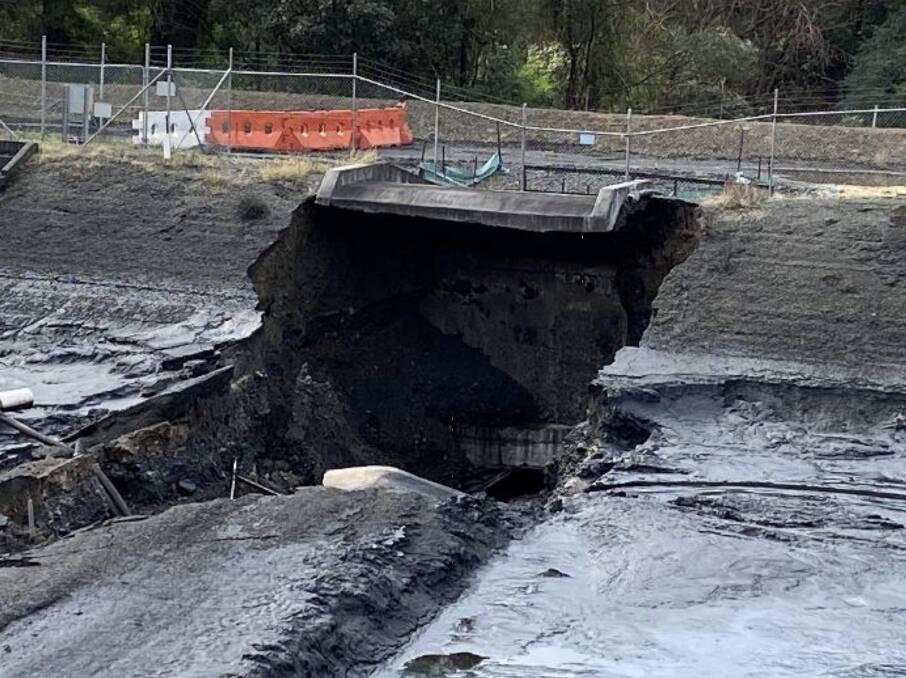
The Illawarra Greens have released an environmental report kept out of the public eye by miner South32, and say they remain concerned about the pollution of two Wollongong creeks despite findings that there were no serious ecological impacts from the August incident.
After heavy rains on the weekend of August 8, coal waste sludge from South32's Dendrobium mine at Kembla Heights flowed into Brandy and Water Creek.
The creek turned black, with Figtree residents and Greens members raising the alarm.
Now, a 46-page environmental assessment, obtained by Greens member Jess Whittaker under freedom of information laws, shows the incident occurred when a dam failed at Kemira Colliery following 150mm of rain.
The company has estimated about 339 cubic metres of material came out of the dam when a culvert failed, releasing up to 10 million litres of water, some potentially containing fine coal particles.
Following the incident, the miner was required to submit an Environment Assessment Report with the Environment Protection Authority in late August, however it declined to make the report public.
Instead, a spokesman then said it showed "there has been limited measurable impact to stream ecology and there was no evidence of fish or fauna mortality" and that the fine coal particles were "considered to be non-toxic".
These findings are echoed in the full report from consultants Niche, saying they believed the environmental effects of the event were limited. They recommended four months of assessment be undertaken to monitor any ongoing effects.
But Greens members have now raised concerns about the limitations of the report, which they say does not explain why the dam collapsed or what the longer term effects of the pollution could be.
"This Environmental Assessment Report still leaves many questions unanswered - like why the culvert collapsed, why analysis wasn't done for all heavy metals found in coal fines, and why the resident's reports of dead aquatic life were not verified," Wollongong Greens councillor Cath Blakey said.
"The report also points out its limited scope because there was no monitoring done beforehand to compare their results to. That's why continuous monitoring should be standard of any tributaries down-stream from a coal mine."
She also said it was "problematic that it took a GIPA request to make the report public" and was worried that this type of pollution had happened "while South32 is trying to expand mining in our drinking catchment".
Cr Blakey said she thought there should be more rigorous environmental conditions, and continuous monitoring of the creeks downstream from the mine, to give a baseline if any future pollution events occurred.
So far, the EPA hasn't issued any fines over the pollution but said in a statement it was disappointed by the incident and would continue to monitor the recovery of the creeks to determine if there were any long-term impacts.
South32 reiterated its previous comments that "there was limited measurable impact to stream ecology" in the creeks.
"We enacted our incident response plan and alerted the NSW Environment Protection Authority soon after the incident occurred and took steps to limit the amount of coal fines entering nearby watercourses," a spokesman said.
"South32 commissioned external consultants to conduct a detailed assessment of any impact on the environment and provided a copy of the report to the NSW Environment Protection Authority.
"South32 undertook clean-up activities along parts of Brandy and Water Creek and American Creek, involving removal of deposits of coal fines found in certain locations in the two creeks.
"Additional monitoring of the local environment has since been undertaken by external consultants commissioned by South32. This monitoring found there were no long-term impacts associated with the event. Remediation work at the sediment pond has been completed."

